
漢德百科全書 | 汉德百科全书
明朝(1368年1月23日-1644年4月25日[注 2])是中国历史上最后一个由汉人建立的大一统王朝,历经十二世、十六位皇帝,国祚二百七十六年[参 4]。
元末年间政治腐败,天灾不断,民不聊生,爆发农民起义,朱元璋加入红巾军中乘势崛起,1364年朱元璋称吴王,建立西吴[参 5]。1368年,在扫灭陈友谅、张士诚和方国珍等群雄势力后,于当年农历正月初四日朱元璋登基称帝,国号大明[参 6],并定都应天府(今南京市),其辖区称为京师,由因皇室姓朱,因此又称朱明。后以“驱逐胡虏,恢复中华”[参 7]为号召北伐中原[参 8][参 9],结束蒙元在中国的统治,丢失四百年的燕云十六州也被收回[参 10],最终消灭张士诚和方国珍等各地势力,统一天下。明初天下大定,经过朱元璋的休养生息,社会经济得以恢复和发展,国力迅速恢复,史称洪武之治。朱元璋去世后,其孙朱允炆即位,但是在靖难之役中败于驻守燕京的朱元璋第四子朱棣。朱棣登基后迁都至顺天府(今北京市),北平布政司升为京师,原京师改称南京[参 3]。至成祖朱棣时期,开疆拓土,又派遣郑和七下西洋,国势达到顶峰,史称永乐盛世。其后的仁宗和宣宗时期仍然处于兴盛时期,史称仁宣之治[参 11]。英宗和代宗时期,遭遇土木之变,国力中衰,经于谦等人抗敌,最终解除国家危机。宪宗和孝宗相继与民休息,孝宗力行节俭,减免税赋,百姓安居乐业,史称弘治中兴[参 12]。武宗时期还爆发了南巡之争和宁王之乱。世宗即位后,引发大礼议之争,清除宦官和权臣势力后总揽朝纲,实现嘉靖中兴,并于屯门海战与西草湾之战中击退葡萄牙殖民侵略,任用胡宗宪和俞大猷等将领平定东南沿海的倭患。世宗驾崩后经过隆庆新政国力得到恢复,神宗前期任用张居正,推行万历新政,国家收入大增,商品经济空前繁荣、科学巨匠迭出、社会风尚呈现出活泼开放的新鲜气息,史称万历中兴[参 13]。后经过万历三大征平定内忧外患,粉碎丰臣秀吉攻占朝鲜进而入明的计划,然而因为国本之争,皇帝逐渐疏于朝政,史称万历怠政,同时东林党争也带来了晚明的政治混乱。万历一朝成为明朝由盛转衰的转折期[参 14]光宗继位不久因红丸案暴毙,熹宗继承大统改元天启,天启年间魏忠贤阉党祸乱朝纲,至明思宗即位后铲除阉党。然而因东林党治国导致政治腐败以及连年天灾[注 3][注 4],导致国力衰退,最终爆发大规模民变。1644年3月18日(旧历二月初十),李自成所建立的大顺军攻破北京,思宗自缢于煤山,明朝灭亡。随后吴三桂倒戈相向,满清入主中原。明朝宗室立江南地区建立南明诸政权,被清朝统治者以“为君父报仇”为名各个歼灭,又击败各地农民军,直到1683年清朝攻占奉大明正朔的明郑台湾方止[参 17]。
明代的核心领土囊括汉地[注 5],东北到外兴安岭及黑龙江流域[参 20],后缩为辽河流域;初年北达戈壁沙漠一带,后改为今长城;西北至新疆哈密,后改为嘉峪关;西南临孟加拉湾[注 6],后折回约今云南境;曾经在今中国东北、新疆东部及西藏等地设有羁縻机构[参 22]。不过,明朝是否实际统治了西藏国际上存在一定的争议[注 7]。明成祖时期曾短暂征服及统治安南[参 23],永乐二十二年(1424年),明朝国土面积达到极盛,在东南亚设置旧港宣慰司[注 8]等行政机构,加强对东南洋一带的管理[参 24][参 25]。
明代商品经济繁荣,出现商业集镇,而手工业及文化艺术呈现世俗化趋势[参 26]。根据《明实录》所载的人口峰值于成化十五年(1479年)达七千余万人[参 27],不过许多学者考虑到当时存在大量隐匿户口,故认为明朝人口峰值实际上逾亿[参 28],还有学者认为晚明人口峰值接近2亿[注 9]。这一时期,其GDP总量所占的世界比例在中国古代史上也是最高的,1600年明朝GDP总量为960亿美元,占世界经济总量的29.2%,晚明中国人均GDP在600美元[注 10]。
明朝政治中央废除丞相,六部直接对皇帝负责,后来设置内阁;地方上由承宣布政使司、提刑按察使司、都指挥使司分掌权力,加强地方管理。仁宗、宣宗之后,文官治国的思想逐渐浓厚,行政权向内阁和六部转移。同时还设有都察院等监察机构,为加强对全国臣民的监视,明太祖设立特务机构锦衣卫,明成祖设立东厂,明宪宗再设西厂(后取消),明武宗又设内厂(后取消),合称“厂卫”。但到了后期出现了皇帝怠政,宦官行使大权的陋习[参 3],但决策权始终集中在皇帝手里,不是全由皇帝独断独行。有许多事还必须经过经廷推、廷议、廷鞫的,同时还有能将原旨退还的给事中[参 34],另到了明代中晚期文官集团的集体意见足以与皇帝抗衡,在遇到事情决断两相僵持不下时,也容易产生一种类似于“宪法危机”的情况,因此“名义上他是天子,实际上他受制于廷臣。”[参 35]。但明朝皇权受制于廷臣主要是基于道德上而非法理上,因为明朝当时风气普遍注重名节,受儒家教育的皇帝往往要避免受到“昏君”之名。皇帝随时可以任意动用皇权,例如明世宗“大礼议”事件最后以廷杖朝臣多人的方式结束[参 36]。
有学者认为明代是继汉唐之后的黄金时期[参 37]。清代张廷玉等修的官修《明史》评价明朝为“治隆唐宋”[注 11]、“远迈汉唐”[参 38]。
Die Ming-Dynastie (chinesisch 明朝, Pinyin Míngcháo) herrschte von 1368 bis 1644 im Kaiserreich China, löste dabei die mongolische Fremdherrschaft der Yuan-Dynastie in China ab und endete im 17. Jahrhundert mit der Qing-Dynastie.
明(みん、1368年 - 1644年)は、中国の歴代王朝の一つである。明朝あるいは大明とも号した。朱元璋が元を北へ逐って建国し、滅亡の後には清が明の再建を目指す南明政権を制圧して中国を支配した。
The Ming dynasty (/mɪŋ/)[6] was the ruling dynasty of China – then known as the Great Ming Empire – for 276 years (1368–1644) following the collapse of the Mongol-led Yuan dynasty. The Ming dynasty was the last imperial dynasty in China ruled by ethnic Han Chinese. Although the primary capital of Beijing fell in 1644 to a rebellion led by Li Zicheng (who established the Shun dynasty, soon replaced by the Manchu-led Qing dynasty), regimes loyal to the Ming throne – collectively called the Southern Ming – survived until 1683.
The Hongwu Emperor (ruled 1368–98) attempted to create a society of self-sufficient rural communities ordered in a rigid, immobile system that would guarantee and support a permanent class of soldiers for his dynasty:[7] the empire's standing army exceeded one million troops and the navy's dockyards in Nanjing were the largest in the world.[8] He also took great care breaking the power of the court eunuchs[9] and unrelated magnates, enfeoffing his many sons throughout China and attempting to guide these princes through the Huang-Ming Zuxun, a set of published dynastic instructions. This failed when his teenage successor, the Jianwen Emperor, attempted to curtail his uncles' power, prompting the Jingnan Campaign, an uprising that placed the Prince of Yan upon the throne as the Yongle Emperor in 1402. The Yongle Emperor established Yan as a secondary capital and renamed it Beijing, constructed the Forbidden City, and restored the Grand Canal and the primacy of the imperial examinations in official appointments. He rewarded his eunuch supporters and employed them as a counterweight against the Confucian scholar-bureaucrats. One, Zheng He, led seven enormous voyages of exploration into the Indian Ocean as far as Arabia and the eastern coasts of Africa.
The rise of new emperors and new factions diminished such extravagances; the capture of the Zhengtong Emperor during the 1449 Tumu Crisis ended them completely. The imperial navy was allowed to fall into disrepair while forced labor constructed the Liaodong palisade and connected and fortified the Great Wall of China into its modern form. Wide-ranging censuses of the entire empire were conducted decennially, but the desire to avoid labor and taxes and the difficulty of storing and reviewing the enormous archives at Nanjing hampered accurate figures.[7] Estimates for the late-Ming population vary from 160 to 200 million,[10] but necessary revenues were squeezed out of smaller and smaller numbers of farmers as more disappeared from the official records or "donated" their lands to tax-exempt eunuchs or temples.[7] Haijin laws intended to protect the coasts from "Japanese" pirates instead turned many into smugglers and pirates themselves.
By the 16th century, however, the expansion of European trade – albeit restricted to islands near Guangzhou like Macau – spread the Columbian Exchange of crops, plants, and animals into China, introducing chili peppers to Sichuan cuisine and highly productive corn and potatoes, which diminished famines and spurred population growth. The growth of Portuguese, Spanish, and Dutch trade created new demand for Chinese products and produced a massive influx of Japanese and American silver. This abundance of specie remonetized the Ming economy, whose paper money had suffered repeated hyperinflation and was no longer trusted. While traditional Confucians opposed such a prominent role for commerce and the newly rich it created, the heterodoxy introduced by Wang Yangming permitted a more accommodating attitude. Zhang Juzheng's initially successful reforms proved devastating when a slowdown in agriculture produced by the Little Ice Age joined changes in Japanese and Spanish policy that quickly cut off the supply of silver now necessary for farmers to be able to pay their taxes. Combined with crop failure, floods, and epidemic, the dynasty collapsed before the rebel leader Li Zicheng, who was defeated by the Manchu-led Eight Banner armies who founded the Qing dynasty.
La dynastie Ming (chinois : 明朝 ; pinyin : 1) est une lignée d'empereurs qui a régné sur la Chine de 1368 à 1644. La dynastie Ming fut la dernière dynastie chinoise dominée par les Han. Elle parvint au pouvoir après l'effondrement de la dynastie Yuan dominée par les Mongols, et dura jusqu'à la prise de sa capitale Pékin en 1644 lors de la rébellion menée par Li Zicheng, qui fut rapidement supplanté par la dynastie Qing mandchoue. Des régimes loyaux au trône Ming (collectivement appelés Ming du Sud) existèrent jusqu'en 1662, année de leur soumission définitive aux Qing.
Le fondateur de la dynastie, l'empereur Hongwu (1368-1398), tenta d'établir une société de communautés rurales auto-suffisantes au sein d'un système rigide et immobile qui n'aurait aucun besoin de s'associer à la vie commerciale des centres urbains. Sa reconstruction de la base agricole chinoise et le renforcement des voies de communication participèrent à l'essor agricole de l'empire qui déboucha sur la création d'importants surplus céréaliers pouvant être vendus dans des marchés bourgeonnant le long des axes de communication. Les villes connurent une importante phase de croissance démographique et commerciale, et également artisanale avec la multiplication des grands ateliers employant des milliers de travailleurs. Les catégories supérieures de la société rassemblées au sein de la basse noblesse furent également affectées par cette nouvelle culture centrée sur la consommation. S'éloignant des traditions, les familles marchandes commencèrent à s'intégrer au sein de l'administration et de la bureaucratie et adoptèrent les traits culturels et les pratiques de la noblesse.
Les Ming présidèrent à la construction d'une puissante marine de guerre et d'une armée de métier d'un million d'hommes2. Bien que des missions commerciales et diplomatiques eussent existé durant les dynasties précédentes, la taille de la flotte menant les différentes expéditions de l'amiral Zheng He était largement supérieure et alla faire la démonstration de la puissance de l'empire jusqu'au Moyen-Orient. Il y eut d'énormes projets de construction dont la restauration du Grand Canal et de la Grande Muraille ainsi que la fondation de Pékin avec sa Cité interdite durant le premier quart du XVe siècle. La population de la fin de la dynastie Ming est estimée à quelque 160 à 200 millions d'individus3.
La période Ming fut remarquable du point de vue de la création littéraire. Stimulée par l'essor de l'impression qui entraîna celui du marché du livre, la production d'ouvrages explosa en quantité. C'est de cette époque que datent les « quatre livres extraordinaires » (Les Trois Royaumes, Au bord de l'eau, La Pérégrination vers l'Ouest, Jin Ping Mei) et certaines des plus grandes pièces de théâtre chinoises (Le Pavillon aux pivoines). Plus largement, les esthètes collectionneurs s'intéressèrent à diverses formes d'arts (peinture, calligraphie, céramique, mobilier), ce qui eut un impact considérable sur la production artistique et artisanale. Si la classe de lettrés resta largement influencée par la tradition confucéenne, qui restait la référence des programmes des concours impériaux, plusieurs personnalités critiques eurent un écho important, en premier lieu Wang Yangming. La critique de la politique gouvernementale, et donc la politisation des réflexions et des débats intellectuels, furent par ailleurs des phénomènes marquants de la fin de la période Ming.
À partir du XVIe siècle, l'économie Ming fut stimulée par le commerce international avec les Portugais, les Espagnols et les Hollandais. La Chine fut impliquée dans l'échange colombien qui vit d'importants transferts réciproques de biens, de plantes et d'animaux entre l'Ancien et le Nouveau Monde. Le commerce avec les puissances européennes et le Japon entraîna un afflux massif d'argent qui devint le moyen d'échange standard en Chine. Durant le dernier siècle de la dynastie, les effets du petit âge glaciaire se firent sentir sur l'agriculture, les catastrophes naturelles et les épidémies, tandis que la vie politique à la cour puis dans l'empire devenait de plus en plus instable. L'effondrement de l'administration qui s'ensuivit fut un prélude à la chute définitive de la dynastie.
La dinastia Ming (明朝S, Míng cháoP, chiamata anche 大明帝国 il grande impero dei Ming) fu la dinastia che assunse il controllo assoluto della Cina dal 1368 al 1644, dopo aver determinato il crollo della precedente dinastia Yuan[1] di origine mongola. Dopo la conquista da parte dell'emergente dinastia Shun della capitale Pechino nel 1644, gli aristocratici fedeli alla causa dei Ming si organizzarono nelle loro roccaforti nelle province meridionali del paese. Nel 1645, la dinastia Qing di etnia manciù sconfisse l'esercito Shun e si impadronì del potere. La resistenza dei cosiddetti Ming meridionali, sarebbe stata progressivamente distrutta dai Qing e dopo il 1662 sarebbero rimasti soltanto dei gruppi isolati di Ming che avrebbero continuato le loro attività antigovernative fino all'istituzione della Repubblica di Cina nel 1912.
Gli imperatori della dinastia Ming erano membri della famiglia Zhu ed erano di etnia han. La dinastia sarebbe stata l'ultima di tale etnia a dominare la Cina.
Durante il regno degli Yuan, vi erano stati tra la popolazione forti sentimenti di opposizione al dominio dei mongoli. Il malessere degli han sfociò in una rivolta popolare che costrinse gli Yuan a ritirarsi nuovamente nelle steppe della Mongolia. La rivolta condotta da Zhu Yuanzhang consentì nel 1368 la presa del potere da parte della dinastia Ming, che promosse un periodo di rinascita culturale nel paese. I mercanti cinesi tornarono ad avere un ruolo di primo piano spingendosi fino all'oceano Indiano e le arti, in special modo quella della produzione di porcellana, raggiunsero traguardi straordinari mai ottenuti prima.
Sotto il regno dei Ming, venne costruita una grande flotta composta da enormi navi dotate di quattro alberi con la stazza fino a 1.500 tonnellate, e venne organizzato un esercito di terra composto da un milione di uomini.
Nella Cina del Nord, vennero prodotte ogni anno più di 100.000 tonnellate di ferro, e molti libri furono stampati con caratteri mobili. Rinomatissime sono le ceramiche Ming, tra cui si annovera quella wu cai. Secondo alcuni storici, la Cina all'inizio della dinastia Ming era la nazione più evoluta della Terra.
La dinastía Ming (chino: 大明, Wade-Giles: Ta4 Ming2, pinyin: Dà Míng) fue la penúltima dinastía de China, que gobernó entre los años 1368 y 1644, tras la caída de la dinastía mongol Yuan.
Algunos historiadores describen a los Ming como “una de las mayores eras de gobierno disciplinado y estabilidad social de la historia humana”.1 Fue la última dinastía en China gobernada por la etnia han. Aunque Pekín, la capital Ming, cayó en 1644 en una rebelión liderada por Li Zicheng (quien estableció la dinastía Shun, que fue rápidamente sustituida por la dinastía Qing, de origen manchú), sobrevivieron hasta 1662 algunos regímenes leales al trono Ming, conocidos comúnmente como dinastía de los Ming del Sur.
Bajo el gobierno de los Ming se construyó una vasta flota y un extenso ejército permanente de un millón de efectivos.2 Aunque ya se habían llevado a cabo expediciones comerciales y diplomáticas desde China en periodos anteriores, la flota tributaria del almirante eunuco musulmán Zheng He durante el siglo XV superó a todas las demás en tamaño. Se realizaron numerosos proyectos de construcción, incluyendo el Gran Canal, la Gran Muralla y la fundación de la Ciudad Prohibida en Pekín durante el primer cuarto del siglo XV. Se estima que la población a finales del reinado de los Ming era de entre 160 y 200 millones de personas.3
El emperador Hongwu, que reinó entre 1368 y 1398, intentó crear una sociedad de comunidades rurales autosuficientes en un sistema rígido e inmóvil que no necesitasen involucrarse en la vida comercial de los centros urbanos. Su reconstrucción de la base agrícola china y la mejora de las vías de comunicación a través de un sistema de caminos militarizados tuvo el efecto inesperado de generar un gran excedente agrícola que pudo ser vendido en florecientes mercados cercanos a las vías de comunicación. La cultura rural y comercial recibió la influencia de las modas urbanas. Los escalones más altos de la sociedad, equiparados a la baja nobleza, se vieron igualmente afectados por esta nueva cultura centrada en la consumición. Alejándose de las tradiciones, las familias comerciantes comenzaron a integrarse en el seno de la administración y de la burocracia y adoptaron los rasgos culturales y las prácticas de la nobleza. Paralelo a esta evolución de la sociedad y del comercio, hubo cambios en el pensamiento filosófico, las instituciones gubernamentales y en las artes y la literatura.
Hacia el siglo XVI, la economía Ming se estimuló por el comercio con los portugueses, los somalíes, los españoles y los holandeses. China se vio envuelta en un incipiente comercio global de materiales, plantas, animales, comida y grano conocido como comercio colombino. El comercio con las potencias europeas y Japón trajo enormes cantidades de plata, lo que sustituyó al cobre y al papel moneda como el medio común de intercambio en China. Durante las últimas décadas de los Ming, el flujo de plata en China disminuyó en gran medida, minando las arcas estatales. Este daño a la economía Ming tuvo varios factores: los efectos en la agricultura de la Pequeña Edad de Hielo, desastres naturales y epidemias. El consiguiente desgaste de las autoridades y la escasez de sustento permitieron a los líderes rebeldes como Li Zicheng desafiar la autoridad de los Ming.
Великая Минская империя (кит. трад. 大明帝國, упр. 大明帝国, пиньинь: Dà Míng Dìguó, палл.: да мин диго) — государство под властью династии Мин (кит. упр. 明朝, пиньинь: Míng Cháo, палл.: мин чао), правившей в Китае после отделения Китая от монгольской империи Юань с 1368 года по 1644 год. Несмотря на то, что минская столица Пекин пала в 1644 году в результате восстания Ли Цзычэна, часть страны оставалась под контролем лояльного к минской семье режима (Южная Мин) до 1662 года.
В империи Мин был построен флот и создана постоянная армия, общая численность которой достигала миллиона человек[1]. Частный сектор земельных владений в результате продолжительных войн сократился до одной трети всей обрабатываемой площади, в противовес чему возрос государственный сектор. По сути, в империи победила надельная система, хотя её установление формально и не было объявлено. Была проведена жёсткая централизация управления, предпринимались попытки регламентировать все сферы жизни граждан. Несмотря на успешное правление первых двух императоров — Чжу Юаньчжана и его сына Чжу Ди — со временем в государственном аппарате империи появились признаки разложения, и к началу XVII века он уже был насквозь пропитан коррупцией, императоры мало интересовались политикой, и вся высшая власть была сосредоточена в руках их многочисленного окружения (родственников, евнухов и придворных). Кризис затронул также аграрные отношения: после тотальной приватизации земли приближёнными императоров государственный сектор практически исчез. Минский Китай начал проводить политику самоизоляции. В это время на северо-восточных окраинах Китая возникло молодое, но сильное государство маньчжуров под вл
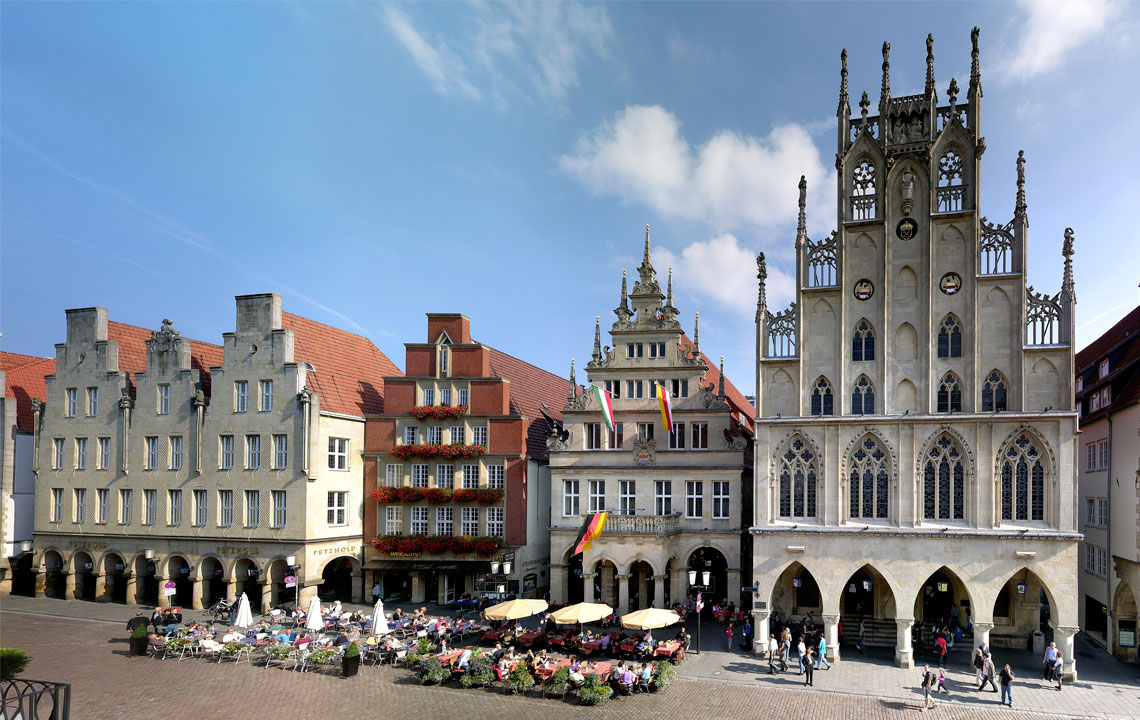




L'ère Meiji (明治時代, Meiji Jidai) est la période historique du Japon entre 1868 et 1912. Initiée par la restauration de Meiji, elle est comprise entre l'ère Keiō (fin de l'époque d'Edo) et l'ère Taishō. Cette période symbolise la fin de la politique d'isolement volontaire appelée sakoku et le début d'une politique de modernisation du Japon.
L’ère Meiji se caractérise par un basculement du système féodal vers un système industriel à l'occidentale.
Ce bouleversement social, politique et culturel déboucha sur diverses avancées dans les domaines de l’industrie, de l’économie, de l’agriculture et en matière d’échanges commerciaux.
Il Periodo Meiji (明治時代 Meiji jidai?, "periodo del regno illuminato") è un momento storico del Giappone che comprende i 44 anni di regno dell'Imperatore Mutsuhito. Questo periodo va dal 23 ottobre 1868 al 30 luglio 1912.
Quando decadde l'ultimo shōgunato di Tokugawa Yoshinobu incominciò l'era dell'imperatore Meiji (primo imperatore dotato di potere politico). Egli incominciò a modificare la struttura politica, sociale ed economica del Giappone, basandosi sul modello occidentale. Nel 1912, dopo la morte dell'Imperatore Mutsuhito, divenne Imperatore Yoshihito che diede inizio al periodo Taishō.
La era Meiji (明治時代 meiji jidai?) o Período Meiji (23 de octubre de 1868 - 30 de julio de 1912) denota los 45 años del reinado del emperador japonés Meiji. Durante este período, el país comenzó su modernización y occidentalización erigiéndose como potencia mundial. El nombre significa "Era de culto a las reglas."
En 1868 se produce la revolución Meiji, y el emperador recupera su poder. Se emprenden, entonces, unas reformas legales tendentes a equiparar la sociedad japonesa con la europea, tomando como modelo la Prusia liberal de Guillermo II.
Tras la muerte del emperador Meiji en 1912, el emperador Taishō subió al trono, dando comienzo a la era Taishō.
Мэйдзи (яп. 明治) — девиз правления (нэнго) императора Муцухито; период в истории Японии с 23 октября 1868 года по 30 июля 1912 года. Этот период ознаменовался отказом Японии от самоизоляции и становлением её как мировой державы.





Meiji-Restauration (jap. 明治維新 Meiji ishin), auch Meiji-Renovation oder Meiji-Revolution, bezeichnet den politischen Umbruch im Jahr 1868 und den Beginn einer neuen Regierungsform im Kaiserreich Japan. Sie stand am Anfang einer Epoche der rasanten Modernisierung und Verwestlichung der japanischen Gesellschaft, wiewohl sie zunächst die Rückkehr zu alten japanischen Werten propagierte, insbesondere der Wiederherstellung des Kaisertums (Tennōismus).
Die Meiji-Restauration verdankt ihren Namen der neuen Ära-Bezeichnung Meiji (明治), die wörtlich übersetzt „erleuchtete Herrschaft” bedeutet. Diese Bezeichnung war zugleich der Thronname des neuen Kaisers (Tennō) Mutsuhito (postum: Meiji-tennō).
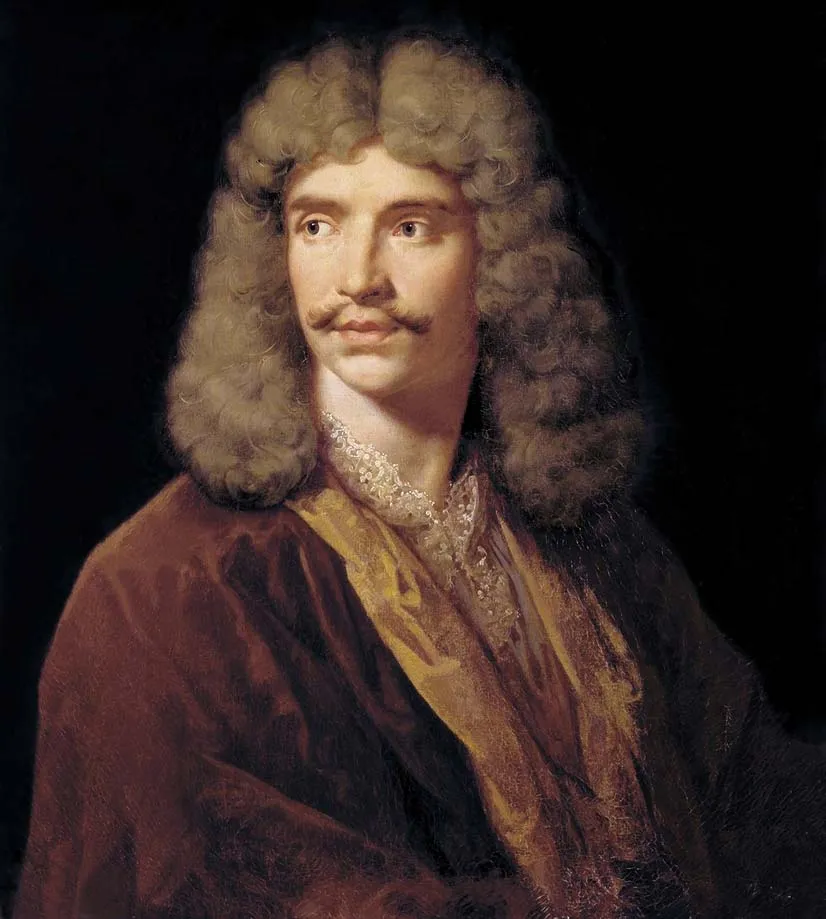
Jean-Baptiste Poquelin alias Molière (getauft am 15. Januar 1622[1] in Paris; † 17. Februar 1673 ebenda) war ein französischer Schauspieler, Theaterdirektor und Dramatiker.
Er ist einer der großen Klassiker und machte die Komödie zu einer der Tragödie potenziell gleichwertigen Gattung. Vor allem erhob er das Theater seiner Zeit zum Diskussionsforum über allgemeine menschliche Verhaltensweisen in der Gesellschaft.
莫里哀(法语:Molière,法语发音:[mɔljɛʁ];1622年1月15日—1673年2月17日),本名让-巴蒂斯特·波克兰(Jean-Baptiste Poquelin,[ʒɑ̃ batist pɔklɛ̃]),17世纪法国喜剧作家、演员、戏剧活动家,法国芭蕾舞喜剧的创始人,也被认为是西洋文学中最伟大的喜剧作家之一[1] [2]。莫里哀著名的作品有《伪君子》《吝啬鬼》《太太学堂》《唐璜》《愤世者》《司卡班的诡计》等,和皮埃尔·高乃依与拉辛合称为法国古典戏剧三杰[3]。

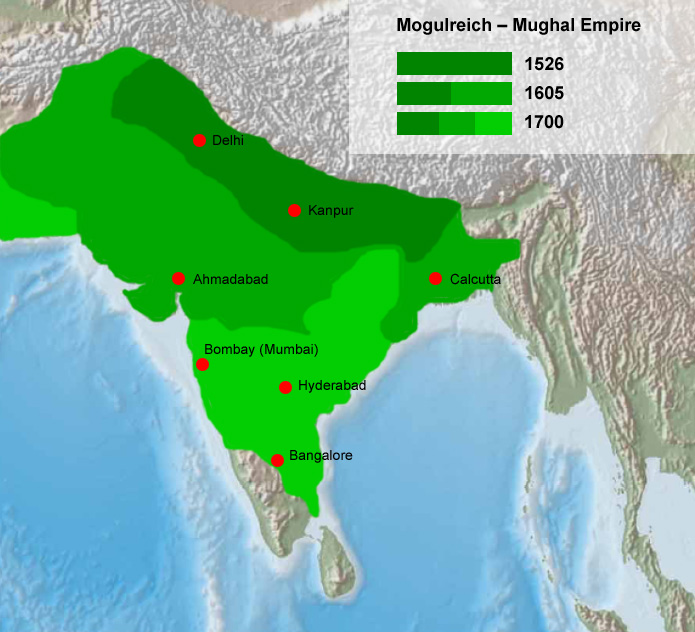
Das Mogulreich war ein von 1526 bis 1858 auf dem indischen Subkontinent bestehender Staat. Das Kernland des Reiches lag in der nordindischen Indus-Ganges-Ebene um die Städte Delhi, Agra und Lahore. Auf dem Höhepunkt seiner Macht im 17. Jahrhundert umfasste das Mogulreich fast den gesamten Subkontinent und Teile des heutigen Afghanistans. Auf 3,2 Mio. Quadratkilometern lebten zwischen 100 und 150 Mio. Menschen.[1] Für das Jahr 1700 wurde sein Anteil an der Weltbevölkerung auf ca. 29 Prozent geschätzt.[2]
Die muslimischen Herrscher werden heute im Deutschen als „Mogul“, „Großmogul“ oder „Mogulkaiser“ bezeichnet. Ähnliche Bezeichnungen finden sich auch in anderen, vor allem westlichen Sprachen. In der Staats- und Hofsprache Persisch, das die ursprüngliche Muttersprache der Moguln – das Tschagataische, eine osttürkische Sprache – abgelöst hatte, lautete der Herrschertitel پادشاه pād(e)šāh. Er war dem Titel eines Kaisers vergleichbar.[3]
Der erste Großmogul Babur (reg. 1526–1530), ein aus Zentralasien stammender Fürst der Timuriden-Dynastie,[4] eroberte, ausgehend vom Gebiet der heutigen Staaten Usbekistan und Afghanistan, das Sultanat von Delhi. Als bedeutendster Mogulherrscher gilt Akbar I. (reg. 1556–1605), der das Reich militärisch, politisch und wirtschaftlich festigte. Unter Aurangzeb (reg. 1658–1707) erfuhr das Imperium der Moguln seine größte territoriale Ausdehnung. Es wurde aber durch die territoriale Expansion finanziell und militärisch derart überspannt, dass es im Laufe des 18. Jahrhunderts zu einer Regionalmacht im politischen Gefüge Indiens herabsank. Mehrere schwere militärische Niederlagen gegen die Marathen, Perser und Afghanen sowie die Verschärfung der religiösen Gegensätze im Inland zwischen der moslemischen „Herrscherkaste“ und der unterworfenen Mehrheitsbevölkerung der bäuerlichen Hindus begünstigten seinen Abstieg zusätzlich. 1858 wurde der letzte Großmogul von Delhi von den Briten abgesetzt. Sein Territorium ging in Britisch-Indien auf.
Der Nachwelt erhalten geblieben sind reiche Zeugnisse einer von persischen und indischen Künstlern geprägten Architektur, Malerei und Dichtung.
莫卧儿帝国、又称为莫卧儿王朝、蒙兀儿王朝(波斯语:شاهان گورکانی Shāhān-e Gūrkānī;乌尔都语:مغلیہ سلطنت;英文:Mughal Empire,1526年-1858年),是成吉思汗和帖木儿的后裔──巴卑尔,自阿富汗南下入侵印度建立的征服王朝。“莫卧儿”即波斯语中“蒙古”一词的转音。在帝国的全盛时期,领土几乎囊括整个印度次大陆,以及中亚的阿富汗等地。帝国的官方语言是波斯语,但是统治者是信奉伊斯兰教、有察合台汗国贵族血统、波斯化的蒙古人。[2]莫卧儿帝国的统治者属于帖木儿王朝的后代。帝国政府是信仰伊斯兰教的穆斯林,波斯语是宫廷、公众事务、外交、文学和上流社会的语言。而基层则是印度各种姓普罗大众组成,主要信仰婆罗门教,使用梵文等各种印度语言。
政权在第二代胡马雍时期曾一度衰落,后在第三代皇帝阿克巴时期进入全盛时期。自第三任皇帝阿克巴一直到第六任奥朗则布统治时期是莫卧儿帝国的全盛时期,帝国的疆域经过逐步的扩张而达顶峰,经济繁荣。奥朗则布去世后,莫卧儿帝国的社会经济发展江河日下,并马拉地帝国崛起,续渐被大英帝国的东印度公司所掌控。1857年,印度民族起义爆发之后,英国击溃起义的印度兵团,并彻底废除已经有名无实的帝国,直接统治印度,开始百年的殖民统治。
ムガル帝国(ムガルていこく、ペルシア語: شاهان مغول、英語: Mughal Empire)は、16世紀初頭から北インド、17世紀末から18世紀初頭にはインド南端部を除くインド亜大陸を支配し、19世紀後半まで存続したトルコ系イスラム王朝(1526年 - 1858年)。ムガル朝(英: Mughal dynasty)とも呼ばれる。首都はデリー、アーグラなど。チンギス・ハーン以来モンゴル帝国系の諸将によってインダス川流域やカシミール地方から度々侵入を受けたが、インドの諸政権はムガル帝国の成立までモンゴル帝国一門に連なる諸勢力による領土的な支配を許していなかった。
ムガル帝国の創始者バーブルは中央アジア出身で、ティムール朝の王族ウマル・シャイフを父、チンギス・ハーンの二男チャガタイを祖とするモグーリスターン・ハン家のユーヌス・ハーンの娘クトルグ・ニガール・ハーヌムを母とするテュルク・モンゴル系の遊牧貴族で、モンゴル帝国におけるチンギス・ハーン家と同族の帝国重臣バルラス部の出自かつモンゴル帝室の王女を后として娶って帝室の娘婿となるキュレゲンの家柄を誇る名門であった。彼がティムール朝の中央アジアにおける没落を機に現在のアフガニスタンからインドに移って第二次ティムール朝と言えるこの帝国を建国した。
こうした経緯から、ムガル帝国は最後の君主バハードゥル・シャー2世の治世まで一貫してティムールを始祖と仰いでおり、ティムールの称号「アミール・ティムール・グーラカーン」、すなわち「チンギス・ハーン家(グーラカーン ペルシア語: گوركان Gūrakān)より子女の降嫁を受けたその娘婿(グレゲン mon:Güregen 、キュレゲン trc:Küregen)であるアミール・ティムールの一門」という意味で、自らは「グーラカーニー(ペルシア語: گوركانى Gūrakānī)」などと呼んでいた。
The Mughal Empire (Persian: گورکانیان, translit. Gūrkāniyān;[9] Urdu: مغلیہ سلطنت, translit. Mughliyah Saltanat)[10][2] or Mogul Empire[11] was an empire in the Indian subcontinent, founded in 1526. It was established and ruled by the Timurid dynasty, with Turco-Mongol Chagatai roots from Central Asia, claiming direct descent from both Genghis Khan (through his son Chagatai Khan) and Timur,[12][13][14] and with significant Indian Rajput and Persian ancestry through marriage alliances;[15][16] the first two Mughal emperors had both parents from Central Asian ancestry.[17] The dynasty was Indo-Persian in culture,[18] combining Persianate culture[11][19] with local Indian cultural influences[18] visible in its traits and customs.[20]
The beginning of the empire is conventionally dated to the victory by its founder Babur over Ibrahim Lodi, the last ruler of the Delhi Sultanate, in the First Battle of Panipat (1526). During the reign of Humayun, the successor of Babur, the empire was briefly interrupted by the Sur Empire. The "classic period" of the Mughal Empire started in 1556 with the ascension of Akbar the Great to the throne. Some Rajput kingdoms continued to pose a significant threat to the Mughal dominance of northwestern India, but most of them were subdued by Akbar. All Mughal emperors were Muslims; Akbar, however, propounded a syncretic religion in the latter part of his life called Dīn-i Ilāhī, as recorded in historical books like Ain-i-Akbari and Dabistān-i Mazāhib.[21] The Mughal Empire did not try to intervene in the local societies during most of its existence, but rather balanced and pacified them through new administrative practices[22][23] and diverse and inclusive ruling elites,[24] leading to more systematic, centralised, and uniform rule.[25] Traditional and newly coherent social groups in northern and western India, such as the Marathas, the Rajputs, the Pashtuns, the Hindu Jats and the Sikhs, gained military and governing ambitions during Mughal rule, which, through collaboration or adversity, gave them both recognition and military experience.[26][27][28][29]
Internal dissatisfaction arose due to the weakness of the empire's administrative and economic systems, leading to its break-up and declarations of independence of its former provinces by the Nawab of Bengal, the Nawab of Awadh, the Nizam of Hyderabad and other small states. In 1739, the Mughals were crushingly defeated in the Battle of Karnal by the forces of Nader Shah, the founder of the Afsharid dynasty in Persia, and Delhi was sacked and looted, drastically accelerating their decline. By the mid-18th century, the Marathas had routed Mughal armies and won over several Mughal provinces from the Punjab to Bengal.[30] During the following century Mughal power had become severely limited, and the last emperor, Bahadur Shah II, had authority over only the city of Shahjahanabad. During the Indian Rebellion of 1857 against the British, Bahadur issued a firman supporting the Indian Rebellion of 1857. Consequent to the rebellion's defeat he was tried by the British East India Company for treason, imprisoned, and exiled to Rangoon.[31] The last remnants of the empire were formally taken over by the British, and the British Parliament passed the Government of India Act 1858 to enable the Crown formally to displace the rights of the East India Company and assume direct control of India in the form of the new British Raj.
The Mughal Empire at its peak extended over nearly all of the Indian subcontinent[7] and parts of Afghanistan. It was the third largest empire to have existed in the Indian subcontinent (behind the Maurya Empire, and the British Indian Empire which replaced it), spanning approximately four million square kilometres at its zenith,[6] second to the Maurya Empire. The maximum expansion was reached during the reign of Aurangzeb, who ruled over more than 150 million subjects, nearly one quarter of the world's population at the time.[32] The Mughal Empire also ushered in a period of proto-industrialization,[33] and around the 17th century, Mughal India became the world's largest economic and manufacturing power,[34] producing a quarter of global industrial output up until the 18th century.[35][36] The Mughal Empire is considered "India's last golden age"[37] and one of the three Islamic Gunpowder Empires (along with the Ottoman Empire and Safavid Persia).[38] The reign of Shah Jahan, the fifth emperor, between 1628 and 1658, was the zenith of Mughal architecture with famous monuments such as the Taj Mahal and Moti Masjid at Agra, the Red Fort, the Jama Masjid, Delhi, and the Lahore Fort.
L'Empire moghol — ou mogol — (persan : شاهان مغول, Shāhān-e Moġul ; ourdou : مغلیہ سلطنت, Muġliyah Salṭanat) est fondé en Inde par Babur, le descendant de Tamerlan, en 1526, lorsqu'il défait Ibrahim Lodi, le dernier sultan de Delhi à la bataille de Pânipat.
Le nom « Moghol » est dérivé du nom de la zone d'origine des Timourides, ces steppes d'Asie centrale autrefois conquises par Genghis Khan et connues par la suite sous le nom de « Moghulistan » : « terre des Mongols ». Bien que les premiers Moghols aient parlé la langue tchaghataï, et conservé des coutumes turco-mongoles, ils avaient pour l'essentiel été « persanisés ». Ils introduisirent donc la littérature et la culture persanes en Inde, jetant les bases d'une culture indo-persane.
L'Empire moghol marque l'apogée de l'expansion musulmane en Inde. En grande partie reconquis par Sher Shâh Sûrî, puis à nouveau perdu pendant le règne d'Humâyûn, il se développe considérablement sous Akbar, et son essor se poursuit jusqu'à la fin du règne d'Aurangzeb. Après la disparition de ce dernier, en 1707, l'Empire entame un lent et continu déclin, tout en conservant un certain pouvoir pendant encore 150 ans. En 1739, il est défait par une armée venue de Perse sous la conduite de Nâdir Shâh. En 1756, une armée menée par Ahmad Shâh pille à nouveau Delhi, tandis que l'empire devient un espace d'affrontements entre les Européens (les Britanniques agrandissent leurs possessions et envahissent le Bengale à l'issue de la guerre de Sept Ans). Après la révolte des cipayes (1857-1858), les Britanniques exilent le dernier empereur moghol, resté jusqu'à cette date, le souverain en titre de l'Inde.
Gran Mogol o Moghul (in persiano: دولتِ مغل, "dinastia Mughal", in urdu: مغلیہ سلطنت, Moghli Solṭanat) è il nome con il quale venivano indicati i membri di una dinastia imperiale che ha regnato durante la dominazione islamica in India.
L'impero Moghul fiorì dal 1526 al 1707, il suo fondatore fu Babur detto il Conquistatore. Egli era un discendente del grande conquistatore turco-mongolo Tamerlano, e governava una delle tante città della Transoxiana, in buona parte l'odierno Uzbekistan.
Scacciato dalle sue terre in seguito all'invasione dei nomadi Uzbeki, Babur, desideroso di conquistare un altro regno, decise di invadere l'India. Con un piccolo ma ben armato esercito invase l'India, allora sotto il dominio del Sultanato di Delhi, e si scontrò con l'esercito del sultano Ibrahim Lodi nella battaglia di Panipat, uscendo vincitore.Babur regnò per altri quattro anni, estendendo il suo nuovo impero dall'Afghanistan al Bengala, e incrementando le migrazioni turche in India dall'Asia centrale, accrescendo così il peso della religione islamica in questo paese. L'impero raggiunse l'apogeo con il terzo imperatore Akbar ("il Grande"), che completò la conquista del Bengala e sottomise il Gujarat e i principati indù Rajputi, che furono ammessi nell'apparato amministrativo Moghul come esattori delle tasse. Akbar fondò la nuova capitale di Fatehpur Sikri e cercò di creare una nuova religione sincretistica tra l'Induismo e l'Islam.
Gli ultimi grandi imperatori Moghul furono Shah Jahan ("Imperatore del mondo"), che regnò dal 1628 al 1658, e suo figlio Aurangzeb (1658 - 1707). Artefice di una politica espansionista, quest'ultimo dedicò gli ultimi anni del suo regno ad una lotta incessante contro i principi indù Maratha (abitanti nell'attuale Maharashtra), che avevano creato la Confederazione Maratha nell'India meridionale.
Aurangzeb impose in tutta l'India la religione islamica, provocando rivolte e guerre. Alla sua morte, avvenuta nel 1707, l'impero si disgregò, e ciò che ne rimaneva fu definitivamente conquistato dagli inglesi dopo la rivolta dei Sepoy nel 1859.
I Moghul sono rimasti famosi per lo sfarzo della loro corte imperiale, e per lo splendore delle loro capitali, Delhi e Agra, che esistono ancora oggi, nonché per i loro stupendi monumenti, basti ricordare ad Agra il Taj Mahal, costruito dall'imperatore Shah Jahan come tomba per la propria sposa, l'imperatrice Mumtaz Mahal, morta giovane nel 1631. Inoltre sono rinomati per la scuola artistica Moghul, che l'imperatore Humayun arricchì invitando un buon numero di artisti persiani presso la sua corte, con il ruolo di maestri. Tra i pittori più importanti della scuola si annovera Basawan.
La dinastia Moghul fu l'ultima forza unificatrice dell'India prima della conquista europea. La sua fine aprì indirettamente le porte dell'India alla penetrazione britannica.
El Imperio mogol, Imperio mogol de la India o Gran Mogol (en turco: Babür İmparatorluğu, en persa: شاهان مغول Shāhān-e Moġul; en urdú: مغل باد شاہ Mughal Baadshah) fue un poderoso estado túrquico islámico del subcontinente indio, que existió entre los siglos XVI y XIX. Abarcó en su período de apogeo la mayor parte de los territorios actualmente correspondientes a la India, Pakistán y Bangladés, llegando a poseer zonas de Afganistán, Nepal, Bután y este del Irán.
El Imperio mogol recibió tal nombre porque sus soberanos pertenecían por la línea materna de su fundador, es decir, a descendientes del jan turco123 Tamerlán (o Timur Lang).
Paradójicamente el origen del Imperio mogol de la India deriva de un momento en el cual el poder timúrida parecía a punto de desaparecer: En efecto, los uzbecos en 1507 prácticamente aniquilaron a los mogoles timuríes en el área que había sido el centro de su poderío: la Transoxiana y el Jurasán. Perseguidas las tropas mogolas, éstas se retiraron al sur de la cordillera del Hindu Kush, y desde esta zona en el centro del actual Afganistán, uno de los descendientes de Tamerlán, llamado Zahir al-Din Muhammad, más conocido como Babar o Baber decidió aprovechar las discordias existentes en el Subcontinente Indio para invadirlo tiempo después.
En 1526, Babur derrotó al último de los sultanes de Delhi, Ibrahim Lodi, en la batalla de Panipat. La palabra "mogol" es una versión indo-aria de la palabra "mongol".
El imperio fue prácticamente conquistado durante el reinado de Humayun por el líder afgano Sher Shah Suri que estableció la dinastía Suri, aunque Humayun acabó recobrando el poder. Más tarde, con Akbar en el poder, el imperio creció de forma considerable y siguió creciendo hasta el final del reinado de Aurangzeb. A la muerte de Aurangzeb en 1707, el imperio inició un lento pero imparable declive, aunque mantuvo el poder en el subcontinente indio durante 150 años más. El Imperio británico terminó con el mogol en 1857.
Este Imperio mogol (que dominó la India entre principios del siglo XVI a mediados del siglo XIX) no se debe confundir con el Imperio mongol (que dominó gran parte de Asia entre el siglo XIII y el XIV).
Импе́рия Вели́ких Мого́лов — тимуридское государство, существовавшее на территории современных Индии, Пакистана, Бангладеш и юго-восточного Афганистана в 1526—1540 и 1555—1858 годах (фактически же — до середины XVIII века). Границы империи на протяжении её существования значительно изменялись. Весь правящий класс, проникший в Индию вместе с Бабуром, как отмечает Е.И. Руденко, называл себя «туранским».
Название «Великие Моголы» появилось уже при английских колонизаторах, ни основатель Империи, ни его потомки сами себя так не называли[3]. Термин «могол» применялся населением в Индии для обозначения всех мусульман Северной Индии и Центральной Азии[4].

 Architecture
Architecture
 Renaissance architecture
Renaissance architecture

 Architecture
Architecture
 Neo-Gothic architecture
Neo-Gothic architecture

 Architecture
Architecture
 Neoclassic architecture *
Neoclassic architecture *

 History
History
 M 1500 - 2000 AD
M 1500 - 2000 AD
 Mexico
Mexico

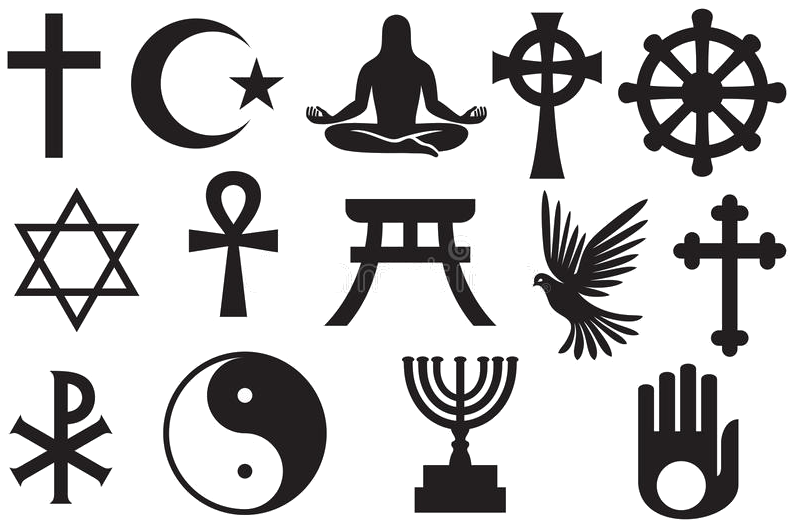 Religion
Religion


Das DynaTAC 8000X von Motorola war das weltweit erste kommerzielle Mobiltelefon. DynaTAC war die Abkürzung für Dynamic Adaptive Total Area Coverage. Es nutzte den damaligen Mobilfunkstandard AMPS.
Im Jahr 1973 startete bei Motorola unter Martin Cooper[1] und dem Chefdesigner Rudy Krolopp[2] die Entwicklung, die 10 Jahre später in Form des Dynatac 8000X am 21. September 1983 seine FCC-Zulassung erhielt.[3] Es wog 794 g und maß 33 × 4,5 × 8,9 cm. Damals kostete es noch 3.995 US-Dollar (entspricht inflationsbereinigt aktuell 10.870 US-Dollar), bot eine Gesprächsdauer von etwa einer Stunde und konnte 30 Nummern speichern.[4] Dennoch hatten schon ein Jahr später (1984) 300.000 Menschen den Urvater des modernen Mobiltelefons. Ein ähnliches Modell ist das als „Knochen“ bekannte Motorola International 3200.

木户孝允 (日语:木戸 孝允/きど たかよし Kido Takayoshi;1833年8月11日—1877年5月26日),为幕末到明治时代初期活跃的武士、政治家。位阶勋等为赠从一位勋一等。木户孝允本姓和田,后过继桂家为养子,名为桂小五郎,幕末时期以“长州藩的桂小五郎”之名闻名日本,为尊王攘夷派中心人物。而后因受幕府通缉,长州藩主毛利敬亲赐姓木户,更名木户孝允,维新后分别担任总裁局顾问、参与、外国官副知事、待诏院出仕、参议(明治3年6月至7年5月)、特命全权副使、文部卿(明治7年1月至同年5月)、兼内务卿、再度担任参议(明治8年3月至9年3月)、宫内省出仕、内阁顾问等职务,为长州阀之统帅代表者。与萨摩的西乡隆盛、大久保利通一起被并称为维新三杰[1],同时也是维新十杰之一。其妹妹之孙子是政治家木户幸一。
Kido Takayoshi (japanisch 木戸 孝允; * 11. August 1833[Anm 2] in Hagi; † 26. Mai 1877), aus dem Lehen (Han) Chōshū stammend, gehörte mit Saigō Takamori und Ōkubo Toshimichi zu den „Drei Großen der Meiji-Restauration“ (維新の三傑, Ishin no Sanketsu).

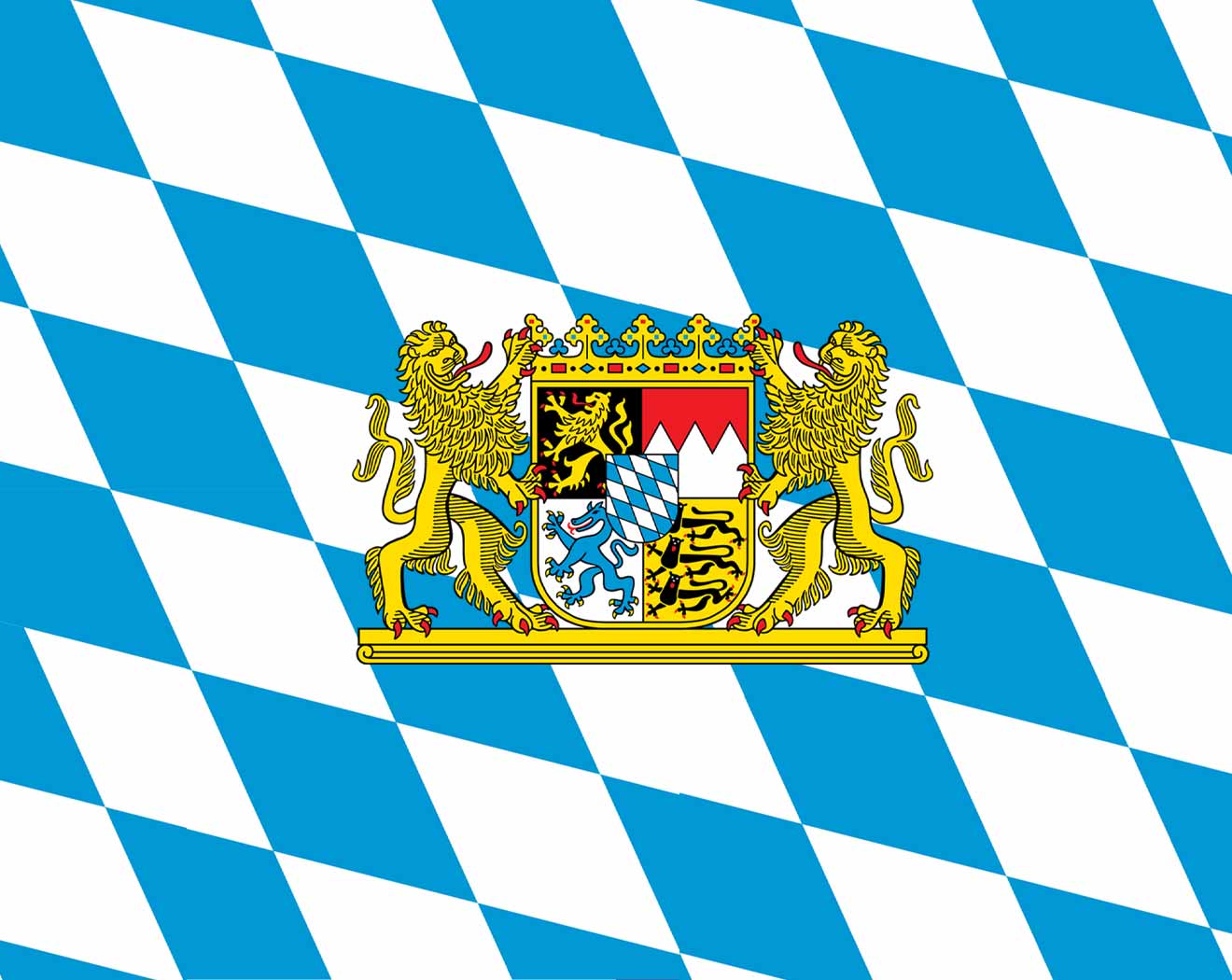 Bavaria
Bavaria
 Germany
Germany
 Eurovision Song Contest,ESC
Eurovision Song Contest,ESC
 FIFA Fussball-Weltmeisterschaft 2006
FIFA Fussball-Weltmeisterschaft 2006
 UEFA European Championship 2020
UEFA European Championship 2020

 UEFA European Championship 2024
UEFA European Championship 2024

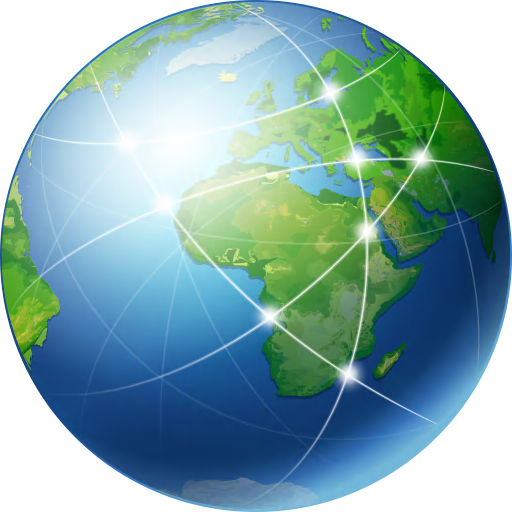 Geography
Geography

 Geography
Geography
 *World's Most Livable Cities
*World's Most Livable Cities

 History
History
 M 1500 - 2000 AD
M 1500 - 2000 AD

 History
History
 L 1000 - 1500 AD
L 1000 - 1500 AD

 History
History
 N 2000 - 2100 AD
N 2000 - 2100 AD

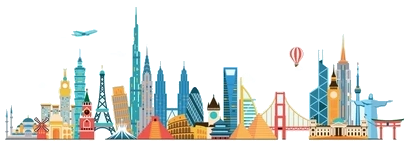 International cities
International cities
 ***Global Urban Economic Competitiveness
***Global Urban Economic Competitiveness
 Olympic Summer Games
Olympic Summer Games
 1972 Summer Olympics
1972 Summer Olympics
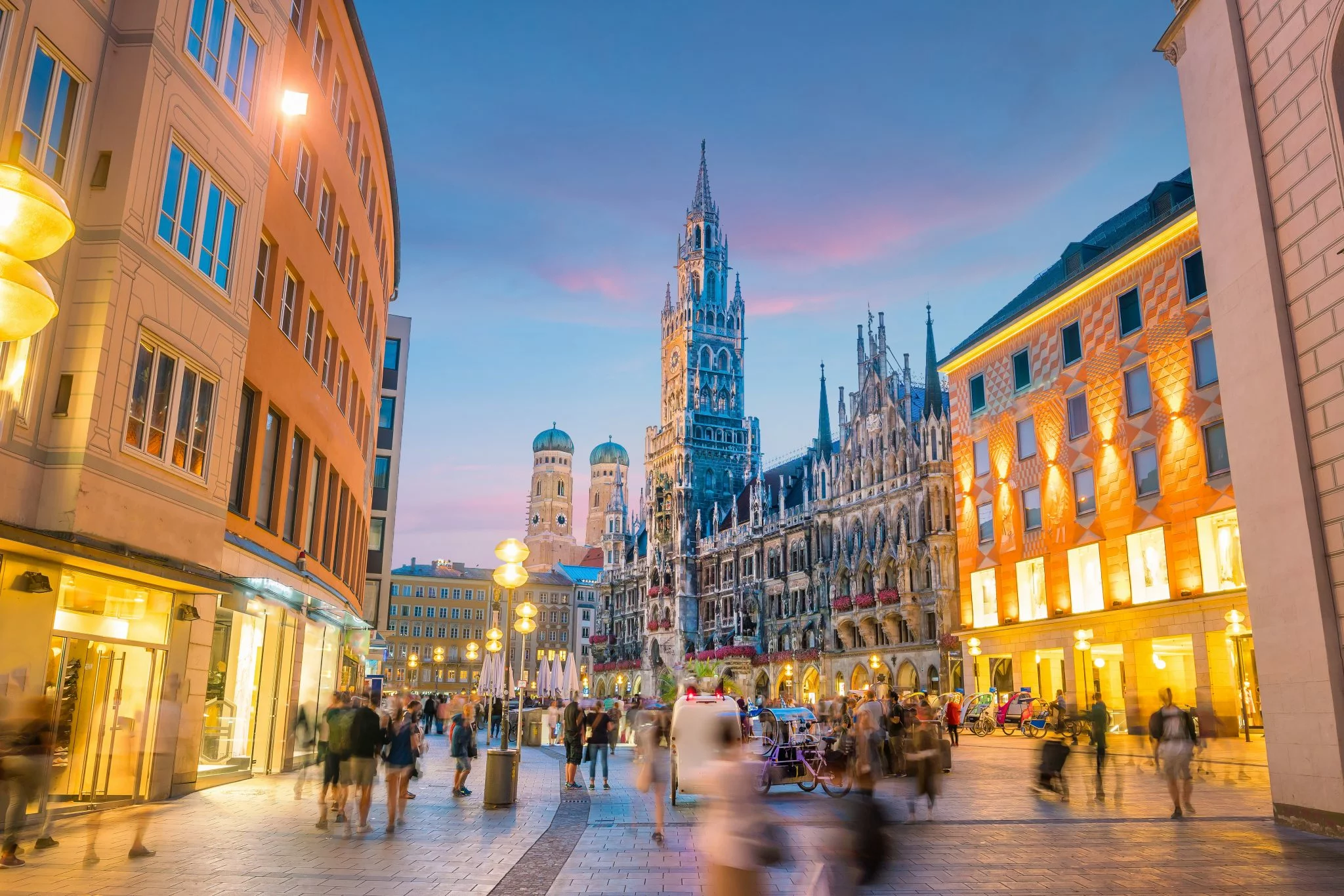

München (hochdeutsch  [ˈmʏnçn̩] oder [ˈmʏnçən̩];[4] bairisch
[ˈmʏnçn̩] oder [ˈmʏnçən̩];[4] bairisch  Minga?/i [ˈmɪŋ(:)ɐ]) ist die Landeshauptstadt des Freistaates Bayern. Sie ist mit rund 1,5 Millionen Einwohnern die einwohnerstärkste Stadt Bayerns und (nach Berlin und Hamburg) die nach Einwohnern drittgrößte Gemeinde Deutschlands sowie die viertgrößte Stadt im deutschsprachigen Raum und zwölftgrößte der Europäischen Union. Im Ballungsraum München leben mehr als 2,9 Millionen Menschen,[5][6] die flächengrößere europäische Metropolregion München umfasst rund 5,7 Millionen Einwohner.
Minga?/i [ˈmɪŋ(:)ɐ]) ist die Landeshauptstadt des Freistaates Bayern. Sie ist mit rund 1,5 Millionen Einwohnern die einwohnerstärkste Stadt Bayerns und (nach Berlin und Hamburg) die nach Einwohnern drittgrößte Gemeinde Deutschlands sowie die viertgrößte Stadt im deutschsprachigen Raum und zwölftgrößte der Europäischen Union. Im Ballungsraum München leben mehr als 2,9 Millionen Menschen,[5][6] die flächengrößere europäische Metropolregion München umfasst rund 5,7 Millionen Einwohner.
Die Landeshauptstadt ist eine kreisfreie Stadt und bayerische Metropole,[7] zudem Verwaltungssitz des die Stadt umgebenden gleichnamigen Landkreises mit dem Landratsamt München als Verwaltung, des Bezirks Oberbayern und des Regierungsbezirks Oberbayern.
München wird zu den Weltstädten gezählt.[8] Die Metropole ist eine der wirtschaftlich erfolgreichsten und am schnellsten wachsenden Europas. Sie ist Sitz zahlreicher Konzerne, darunter fünf DAX-Unternehmen (Allianz, BMW, Linde, Munich Re, Siemens). Hier befindet sich die einzige Börse Bayerns. In der Städteplatzierung des Beratungsunternehmens Mercer belegte München im Jahr 2018 unter 231 Großstädten weltweit den dritten Platz nach Lebensqualität.[9] Laut dem Magazin Monocle war es 2018 sogar die lebenswerteste Stadt der Welt.[10] Andererseits wird die Lebensqualität zunehmend durch Agglomerationsnachteile, wie Verkehrs- und Umweltbelastung sowie sehr hohe Wohneigentumspreise und Mieten[11][12] eingeschränkt, weshalb auch die Wohnfläche pro Einwohner weit unter dem Bundesdurchschnitt liegt.[13] München gilt als sicherste Kommune unter den deutschen Großstädten über 200.000 Einwohnern hinsichtlich der Kriminalitätsrate aller Straftaten.[14]
München wurde 1158 erstmals urkundlich erwähnt.[15] Die Stadt wurde 1255 bayerischer Herzogssitz, war von 1328 bis 1347 kaiserliche Residenzstadt und wurde 1506 alleinige Hauptstadt Bayerns. München ist Sitz zahlreicher nationaler und internationaler Behörden sowie wichtiger Universitäten und Hochschulen, bedeutender Museen und Theater. Durch eine große Anzahl sehenswerter Bauten samt geschützten Baudenkmälern und Ensembles, internationaler Sportveranstaltungen, Messen und Kongresse sowie das weltbekannte Oktoberfest ist München ein Anziehungspunkt für den internationalen Tourismus.
In der Städteplatzierung des Beratungsunternehmens Mercer belegte München im Jahr 2012 unter fünfzig Großstädten weltweit nach Infrastruktur den zweiten und nach Lebensqualität den vierten Platz.
慕尼黑位于德国南部阿尔卑斯山北麓的伊萨尔河畔,是德国南部第一大城,全德国第三大城市,仅次于首都柏林与北部最大城市汉堡。是德国主要的经济、文化、科技和交通中心之一,也是欧洲最繁荣的城市之一。慕尼黑同时又保留着原巴伐利亚王国都城的古朴风情,被人们称作“百万人的村庄”,是生物工程学、软件及服务业的中心。拥有各大公司的总部和许多跨国公司的欧洲总部。
慕尼黑是德国第二大金融中心(仅次于法兰克福),慕尼黑是欧洲最大的出版中心,拥有德国最大的日报之一《南德意志报》,以及许多出版社(仅次于纽约市)。
慕尼黑(德语:München)是德国巴伐利亚州的首府。慕尼黑分为老城与新城两部分,总面积达310平方千米。它是德国南部第一大城,全德国第三大城市,排在柏林与汉堡之后,总人口约130万,有“百万人的村落”的美称。慕尼黑位于德国南部,是巴伐利亚州的文化中心兼首府。它享有“欧洲建筑博物馆”的美誉,哥特式、古罗马式、巴洛克式古建筑以及各式现代化的建筑比比皆是,圣母教堂、路德维希大街是这座城市不可遗忘的部分。自中世纪起,慕尼黑就以啤酒而闻名。是世界第三大啤酒生产地。一年一度的啤酒节让整个城市都沉浸在欢乐的气氛中。这里还是高科技产业中心,宝马、西门子等世界性的大企业总公司就设在慕尼黑。慕尼黑工科大学的科研开发堪称世界一流 。
ミュンヘン(ドイツ語: München, ドイツ語発音: [ˈmʏnçən] (![]() 音声ファイル)[2], バイエルン語: Minga)は、イーザル川河畔にありバイエルンアルプスの北側に位置する都市。ドイツの連邦州であるバイエルン州最大の都市であり、同州の州都でもある。
音声ファイル)[2], バイエルン語: Minga)は、イーザル川河畔にありバイエルンアルプスの北側に位置する都市。ドイツの連邦州であるバイエルン州最大の都市であり、同州の州都でもある。
ミュンヘン(標準ドイツ語:München, バイエルン語:Minga〔ミンガ〕、ミュンヘン方言:Münchn〔ミュンヒン〕)という名は僧院という意味で、ドイツ語で僧を表す「メンヒ」に由来する。漢字表記は「民顕」。"che" の部分の無声硬口蓋摩擦音 [ç] の音写を表すために、[hə]/[xə] の発音を示す「ヘ」ではなく、[çə] の発音を示す「ヒェ」を用い、「ミュンヒェン」とも表記される(こちらのほうがドイツ語の発音に近い)。また "Mü" の発音は正確には「ミュ」ではなく、[mʏ] であり、[ʊ] の形に唇を開き、[ɪ] と発音した音に近い。同じ上部ドイツ語に属するアレマン語では、Münche(ミュンヒェ/ミュンキェ)と発音される。英語やフランス語では Munich(英語:ミューニック[mjú:nik]/仏語:ミュニク[mynik])、イタリア語では Monaco(モナコ公国との区別のために、「バイエルンの」という意味の語をつけてMonaco di Baviera, モナコ・ディ・バヴィエラ)と呼ばれる。
ミュンヘンはベルリン、ハンブルクに次いでドイツでは3番目に大きな都市で、市域人口は140万人近くに達する。1972年にミュンヘンオリンピックが開催された。
ミュンヘンの標語は「ミュンヘンはあなたを愛している。」 "München mag Dich" だが、2006年以前は "Weltstadt mit Herz" 「心を持つ国際都市」であった。ミュンヘンの市章には地名の由来となった僧が表現され、黒と金の配色の市旗は神聖ローマ帝国の色で市の公式の色としてルートヴィヒ4世の時代以来使われている。
今日のミュンヘンは金融、出版の中心都市でたびたび、移住者などが住むのに適した場所として上位に位置付けられる。2011年のマーサー・ヒューマン・リソース・コンサルティングによる世界で最も居住に適した都市では4位を獲得した[3]。2010年のライフスタイルマガジンMonocleの調査では5位に付けており、未だにドイツの都市の中では高い位置にある[4]。経済的、社会的革新に関する162の指標の分析を基にした調査では2thinknowイノベーション都市指数で289都市中、世界では15位、ドイツ国内では5位に付けた[5]。
Munich (/ˈmjuːnɪk/; German: München [ˈmʏnçn̩] ( listen);[2] Austro-Bavarian: Minga [ˈmɪŋ(ː)ɐ]) is the capital and the most populated city in the German state of Bavaria, on the banks of the River Isar north of the Bavarian Alps. Munich is also the third largest city in Germany, after Berlin and Hamburg, and the 12th largest city in the European Union, with a population of around 1.5 million.[3] The Munich Metropolitan Region is home to 6 million people.[4]
listen);[2] Austro-Bavarian: Minga [ˈmɪŋ(ː)ɐ]) is the capital and the most populated city in the German state of Bavaria, on the banks of the River Isar north of the Bavarian Alps. Munich is also the third largest city in Germany, after Berlin and Hamburg, and the 12th largest city in the European Union, with a population of around 1.5 million.[3] The Munich Metropolitan Region is home to 6 million people.[4]
The city is a major centre of art, technology, finance, publishing, culture, innovation, education, business, and tourism in Germany and Europe and enjoys a very high standard and quality of living, reaching first in Germany and third worldwide according to the 2018 Mercer survey,[5] and being rated the world's most liveable city by the Monocle's Quality of Life Survey 2018.[6] According to the Globalization and World Rankings Research Institute Munich is considered an alpha-world city, as of 2015.[7]
The name of the city is derived from the Old/Middle High German term Munichen, meaning "by the monks". It derives from the monks of the Benedictine order, who ran a monastery at the place that was later to become the Old Town of Munich; hence the monk depicted on the city's coat of arms. Munich was first mentioned in 1158. Catholic Munich strongly resisted the Counter-Reformation and was a political point of divergence during the resulting Thirty Years' War, but remained physically untouched despite an occupation by the Protestant Swedes.[8][citation needed] Once Bavaria was established as a sovereign kingdom in 1806, it became a major European centre of arts, architecture, culture and science. In 1918, during the German Revolution, the ruling house of Wittelsbach, which had governed Bavaria since 1180, was forced to abdicate in Munich and a short-lived socialist republic was declared.
In the 1920s, Munich became home to several political factions, among them the NSDAP. The first attempt of the Nazi movement to take over the German government in 1923 with the Beer Hall Putsch was stopped by the Bavarian police in Munich with gunfire. After the Nazis' rise to power, Munich was declared their "Capital of the Movement". During World War II, Munich was heavily bombed and more than 50% of the entire city and up to 90% of the historic centre were destroyed. After the end of postwar American occupation in 1949, there was a great increase in population and economic power during the years of Wirtschaftswunder, or "economic miracle". Unlike many other German cities which were heavily bombed, Munich restored most of its traditional cityscape and hosted the 1972 Summer Olympics. The 1980s brought strong economic growth, high-tech industries and scientific institutions, and population growth. The city is home to major corporations like BMW, Siemens, MAN, Linde, Allianz and MunichRE.
Munich is home to many universities, museums and theatres. Its numerous architectural attractions, sports events, exhibitions and its annual Oktoberfest attract considerable tourism.[9] Munich is one of the most prosperous and fastest growing cities in Germany. It is a top-ranked destination for migration and expatriate location, despite being the municipality with the highest population density in Germany (4,500 people per km²) . Munich hosts more than 530,000 people of foreign background, making up 37.7% of its population.[10]
Munich (/my.nik/) (München en allemand, prononcé : [ˈmʏnçən] Écouter ; Minga en bavarois) est une ville du sud de l'Allemagne et la capitale du Land de Bavière. Avec 1 548 319 habitants intra-muros au 30 juin 20171 et 2 351 706 habitants dans son aire urbaine2, elle est la troisième ville d'Allemagne par la population après Berlin et Hambourg. La Région métropolitaine de Munich, qui englobe également Augsbourg et Ingolstadt, compte quant à elle plus de cinq millions d'habitants. Traversée par l'Isar, affluent du Danube, elle se situe dans le district de Haute-Bavière, au pied des Alpes bavaroises.
Le nom de la ville provient du vieux haut-allemand Munichen (« par les moines »), en raison de la présence d'un monastère bénédictin à l'emplacement actuel de la vieille ville ; l'héraldique fait par ailleurs figurer un moine. Mentionnée pour la première fois en 1158, Munich devient la ville de résidence des ducs de Bavière en 1255 et de l'empereur romain germanique Louis IV. En 1506, après deux siècles de division, les principautés s'unifient pour former la Bavière. Ville catholique - ce dont témoigne la cathédrale Notre-Dame, principal édifice religieux de la ville -, elle est l'un des foyers de la Contre-Réforme. Devenue capitale de l'électorat de Bavière (1623) puis du royaume de Bavière (1805), elle devient un des principaux centres culturels, artistiques et scientifiques allemands au XIXe siècle, sous l'impulsion du roi Louis II.
Au cours du XXe siècle, Munich connaît un important développement industriel, devenant le premier pôle économique de la République fédérale allemande (1949-1990) puis de l'Allemagne réunifiée. Elle accueille notamment le siège de grandes sociétés comme Siemens, Allianz, BMW, Münchener Rückversicherung, Linde, Airbus Deutschland et HypoVereinsbank. Selon Eurostat, la zone urbaine élargie de la région métropolitaine de Munich est la plus importante d'Allemagne en termes de PIB avec 117,6 milliards d'euros, devant Hambourg, Berlin et Francfort. Avec un PIB par habitant de 53 073 euros, Munich est également l'une des villes les plus riches de l'Union européenne2.
Deuxième destination touristique d'Allemagne après Berlin, Munich est célèbre pour sa traditionnelle fête de la bière, l'Oktoberfest, qui se déroule chaque année de fin septembre à début octobre. Outre la cathédrale, la ville a également un important patrimoine historique, composé notamment du château de Nymphenbourg, de très nombreux musées richement dotés et de deux vastes jardins, le Hofgarten et le Englischer Garten (jardin anglais). Réputée être l'une des villes les plus agréables à vivre au monde, Munich accueille de nombreux évènements internationaux, dont les Jeux olympiques d'été de 1972, qui furent le théâtre d'une sanglante prise d'otages. Enfin, elle est le lieu de résidence de l'un des principaux clubs de football d'Europe, le Bayern Munich, qui joue dans l'Allianz Arena, au nord du centre-ville.
Monaco di Baviera (/ˈmɔnako di baˈvjɛra/; in tedesco: München, /ˈmʏnçən/, ascolta[?·info]; in bavarese: Minga) è una città extracircondariale della Germania meridionale, capitale (Landeshauptstadt) della Baviera. Situata sulle rive del fiume Isar, dopo Berlino ed Amburgo è la terza città tedesca per numero di abitanti[2], con una popolazione di circa 1 528 849 (30-04-2016) residenti nel comune,[3] 1 808 550 se si considera anche il circondario di Monaco e circa 2,7 milioni nell'area metropolitana.
È la città più importante della Germania meridionale, grazie alle residenze reali, agli immensi parchi, ai suoi musei, alle sue chiese barocche e rococò, al folclore bavarese ancora molto vissuto, alla vicinanza delle Prealpi e delle Alpi e naturalmente grazie alla birra ed alla sua manifestazione più famosa, l'Oktoberfest. Il santo patrono della città è San Benno di Meißen. Nel 2015[4] uno studio della società di consulenza globale Mercer ha classificato Monaco di Baviera al quarto posto tra le 20 città del mondo con la miglior qualità della vita; nel 2016[5] la città mantiene la sua posizione.
Múnich2 (AFI: ['mu.nitʃ], también [ˈmu.nik];3 en alemán, München,  [ˈmʏnçən] (?·i); en austro-bávaro: Minga [ˈmɪŋ(ː)ɐ]) es la capital, la mayor y la más importante ciudad del estado federado de Baviera y,4 después de Berlín y Hamburgo, la tercera ciudad de Alemania por número de habitantes. Se encuentra sobre el río Isar, al norte de los Alpes Bávaros.
[ˈmʏnçən] (?·i); en austro-bávaro: Minga [ˈmɪŋ(ː)ɐ]) es la capital, la mayor y la más importante ciudad del estado federado de Baviera y,4 después de Berlín y Hamburgo, la tercera ciudad de Alemania por número de habitantes. Se encuentra sobre el río Isar, al norte de los Alpes Bávaros.
El lema de la ciudad es München mag Dich (A Múnich le gustas). Antes de 2006 era Weltstadt mit Herz (Ciudad cosmopolita con corazón). Su nombre, München, deriva de Munichen, del alto alemán antiguo, que significa «en el lugar de los monjes». El nombre de la ciudad viene de los monjes benedictinos que fundaron la ciudad; de ahí que en el escudo de la ciudad haya un monje. Los colores oficiales de la ciudad son el negro y el oro, colores del Sacro Imperio Romano Germánico, desde tiempos de Luis IV de Baviera.
El área metropolitana de Múnich incluye algunas localidades colindantes de esta ciudad. Según un estudio de 2009, Múnich es la ciudad con la mejor calidad de vida de Alemania.5
El Múnich moderno es un centro financiero y editorial. En cuanto a innovación social y económica, la ciudad se encuentra en el 15.º lugar entre 289 ciudades según un estudio de 2010, y es la quinta ciudad alemana para el 2thinknow Innovation Cities Index basado en un análisis de 162 indicadores.6
El exónimo en español de la ciudad, que posee la particularidad de contar con una «ch» final, algo ajeno al sistema fonológico español, nace de los exónimos en francés e inglés. Por tanto, la pronunciación del exónimo es, etimológicamente, [ˈmunik], a través de la pronunciación del exónimo en inglés, o ['munitʃ], siguiendo las normas de pronunciación habituales del español. El gentilicio es «muniqués» y su plural, «muniqueses». El Diccionario Panhispánico de Dudas desaconseja la pronunciación con diptongo [ˈmiunik], propia del inglés.7 Múnich fue sede de los Juegos Olímpicos de 1972.
Мю́нхен (нем. München [ˈmʏnçən], бав. Minga, лат. Monacum, Monachium) — город на реке Изаре, на юге Германии, в федеральной земле Бавария. Внерайонный город (нем. kreisfreie Stadt), одновременно являющийся административным центром Баварии и административного округа Верхняя Бавария.
Название города произошло от древневерхненемецкого Munichen — «у монахов».
Население Мюнхена — 1 542 886 человек (31 октября 2016)[6]. Таким образом, он является крупнейшим городом Баварии и третьим, после Берлина и Гамбурга, городом Германии. В Мюнхене находится правительство Баварии, правительство округа Верхняя Бавария, а также правительство мюнхенского городского округа.
Мюнхен славится своими пивоваренными традициями. В городе находятся шесть крупных пивоварен, которые снабжают пивом знаменитый на весь мир Октоберфест — праздник пива, кренделей, жареных курочек и каруселей, ежегодно проводящийся в конце сентября — начале октября на Терезином лугу.
Современный Мюнхен — не только сосредоточие культурных и музейных ценностей, но и крупный промышленный и исследовательский центр. Благодаря знаменитым университетам, одной из крупнейших в Европе Баварской государственной библиотеке, насчитывающей шесть миллионов томов, институтам имени Макса Планка и имени Хайнца Майера-Лейбница, ядерному научно-исследовательскому реактору и многим другим учреждениям Мюнхен удерживает прочные позиции в европейской науке. Также Мюнхен по праву считается ИТ-столицей Германии. Недвижимость в Мюнхене самая дорогая в Германии.[7]

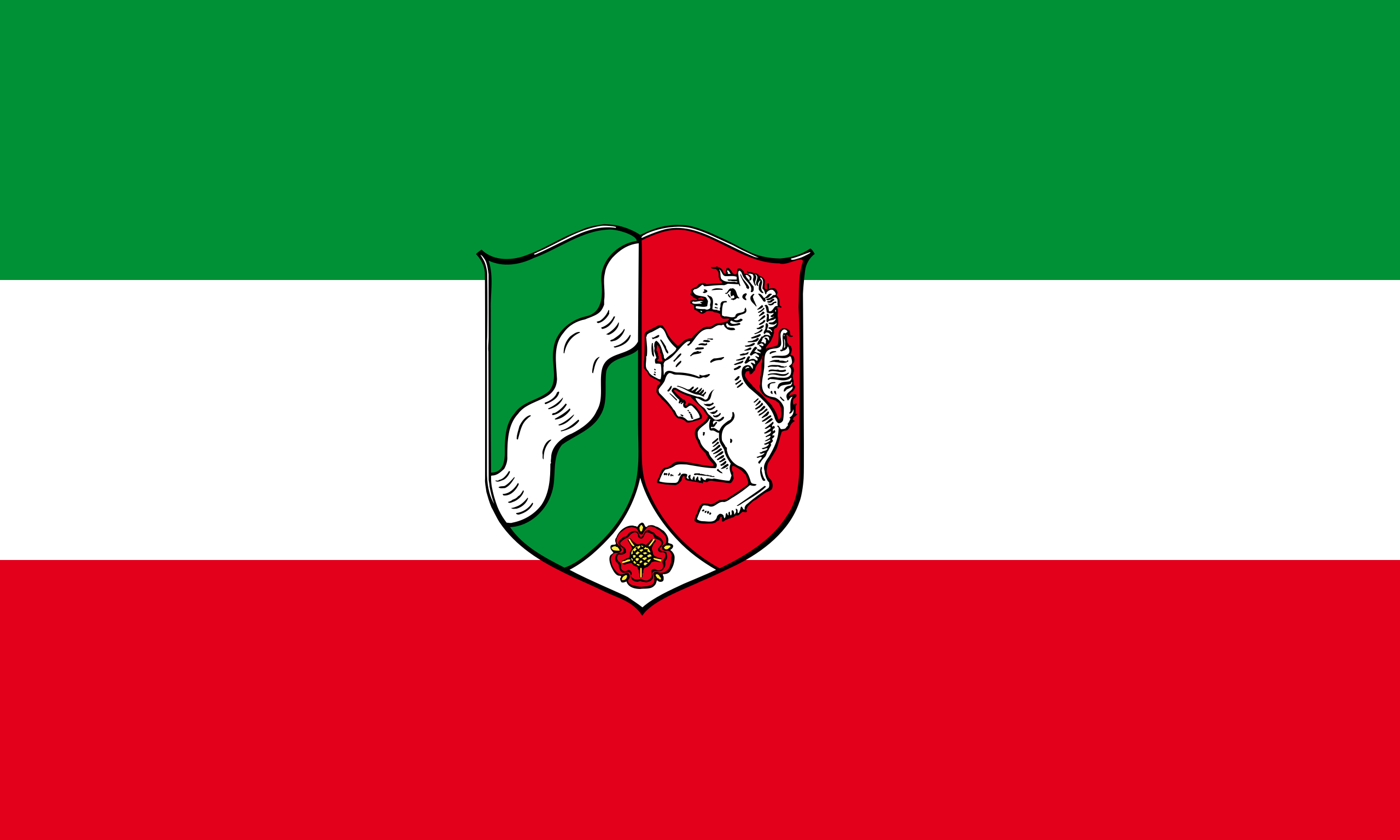 North Rhine-Westphalia
North Rhine-Westphalia

 Literature
Literature
 Financial
Financial
 Historical coins, banknotes
Historical coins, banknotes
 Science and technology
Science and technology

 IT-Times
IT-Times
 Review
Review